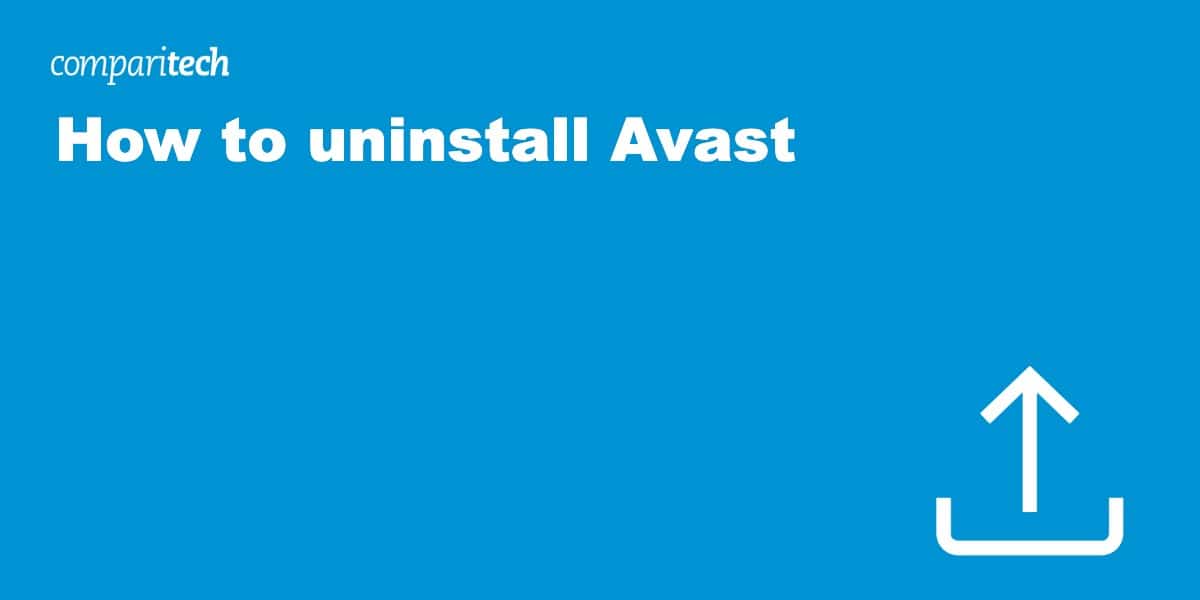Avast is a popular antivirus choice, but there might come a time when you want to switch to a different security solution or remove it from your system. This guide will help you whether you’re experiencing conflicts with other software, looking for different features, or simply deciding you no longer need it.
Here are some different ways to uninstall Avast, providing options for quick removal or a more thorough cleanup:
Standard uninstall (for a quick removal)
This is the fastest way to get rid of the main Avast Antivirus components, but might leave some files behind. For the cleanest removal, consider using the Avast Uninstall Utility.
- Close Avast: Right-click the Avast icon in your taskbar and select “Avast shields control” followed by “Disable permanently”. Confirm your choice.
- Windows Uninstall: Navigate to the Start menu > Settings > Apps.

- Locate & Uninstall: Find Avast Free Antivirus (or your specific Avast product) and click Uninstall. Follow the on-screen instructions.

- Restart: A reboot is usually required to finalize the changes.
Why users choose to uninstall
Despite Avast’s robust protection, there are several valid reasons to consider removal:
- System performance: While Avast is generally lightweight, some users notice slower system performance, especially during scans or updates.
- Feature overlap: If you’re using multiple security products, you might experience conflicts or redundant protection.
- Privacy concerns: Some users prefer alternatives due to data collection policies and privacy considerations.
- Subscription changes: You might want to explore other options after your subscription expires or if you find better-suited alternatives.
Using the Avast Uninstall Utility (for complete removal)
To ensure no leftover files remain, Avast provides a dedicated tool:
- Download: Get the Avast Uninstall Utility (avastclear) from their website.

- Run in Safe Mode (Recommended): For the best results, reboot your computer in Safe Mode. See instructions for your Windows version on Microsoft Support.
- Locate Avast Folder: In the Utility, select the Avast installation folder if not detected automatically.
- Uninstall: Click “Uninstall” and wait for the process to finish. Restart your computer as instructed.
Uninstalling other Avast products
Avast offers a range of security products aside from their core antivirus. Here’s how the process might differ:
- Avast Secure Browser: This may be uninstalled like any other application through your browser add-ons/extensions settings or via the usual Windows Programs and Features settings.
- Avast Cleanup Premium: This system optimizer should uninstall using the standard methods described above. Check your Applications folder on Mac.
- Avast SecureLine VPN: Locate the standalone VPN program and use the standard uninstall procedures. Check Applications on Mac.
Important: If you’re unsure which Avast products you have installed, it’s always a good idea to consult their official support website for specific instructions.
How to uninstall Avast from Mac
While Avast products primarily target Windows, they have some Mac offerings. The process is usually simpler:
- Open Finder and navigate to the Applications folder.
- Locate Avast Security (or the specific Avast product).
- Drag it to the Trash bin and empty the Trash.
- Additional Cleanup (Optional): Search for and delete any leftover Avast files manually in the following directories:
- /Library/Application Support/Avast
- /Library/LaunchAgents
- /Library/LaunchDaemons
Troubleshooting uninstall issues
If you hit any snags, here are a few solutions to common problems:
- “Avast is still running.” Ensure Avast is fully closed and not just minimized. Use Task Manager (Ctrl + Shift + Esc) to terminate any Avast processes if necessary.
- “Files cannot be deleted.” Restarting in Safe Mode can often resolve this issue.
- Uninstaller errors. Ensure you’re using the latest Avast Uninstall Utility. For persistent issues, contact Avast support.
Looking for a replacement?
If you’re ditching Avast, remember to protect your system! Check out these excellent alternatives:
- Bitdefender Antivirus Plus: Powerful and user-friendly with features like ransomware protection.
- Norton 360: Comprehensive suite with a secure VPN, dark web monitoring, and more.
Post-uninstallation security checklist
After removing any antivirus software, it’s crucial to maintain your system’s security. Here’s your essential checklist:
Immediate actions
Verify Windows Security is active and running properly. Run a quick system scan to establish a security baseline. Check that your firewall is enabled and functioning.
System optimization
Remove temporary files and browser cache for a fresh start. Update Windows and all remaining software to their latest versions. Consider running the built-in Windows Disk Cleanup utility.
Long-term security planning
- Take this opportunity to develop better security habits:
- Create a regular backup schedule
- Set up automatic Windows updates
- Use strong, unique passwords
- Enable two-factor authentication where possible
- Keep important files backed up to cloud storage
Monitor your system
- Watch your computer’s performance over the next few days:
- Check for improved boot times
- Monitor overall system responsiveness
- Verify that all programs run correctly
- Ensure internet connectivity remains stable
This comprehensive approach helps ensure your system stays protected during and after the transition to new security software.
Uninstall Avast – FAQs
Why would I uninstall Avast?
Reasons include performance issues, preference for another antivirus, or no longer needing the protection.
Is it safe?
Yes, as long as a replacement antivirus or Windows Defender is in place.
Will uninstalling cancel my subscription?
No, you’ll need to handle cancellations separately.



